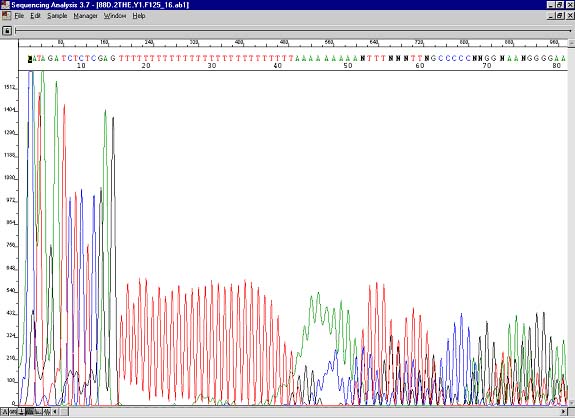
Polymerase Slips

Here is a common type of slip: mononucleotide, and consisting of thymine. They are the result of one strand reannealing skewed with respect to the other strand. Taq's 50 to 60 base processivity may also be a factor in the longer runs. When these differently skewed strands terminate and accumulate, each has a slightly different T run length and will migrate accordingly. This case is particularly bad. Usually a 25 base T run will have a small, one base slip that is masked by the actual dominant peak. It is believed that contaminants that interfere with strand annealing make the smaller repeats more of a nuisance. Repeats also deplete free dNTPs. Several methods are available to overcome this obstacle. Easily, we could resequence the sample using ABI's dRhodamine sequencing kit, a chemistry that resists slippage to an extent. Also we stock a PolyT-3'V primer, 5' TTT…TTT(AGC) 3', which is sometimes successful. However, problems will arise if there is more than one T run in the template. Other more drastic modifications include reverse sequencing or designing specific Poly T primers.
